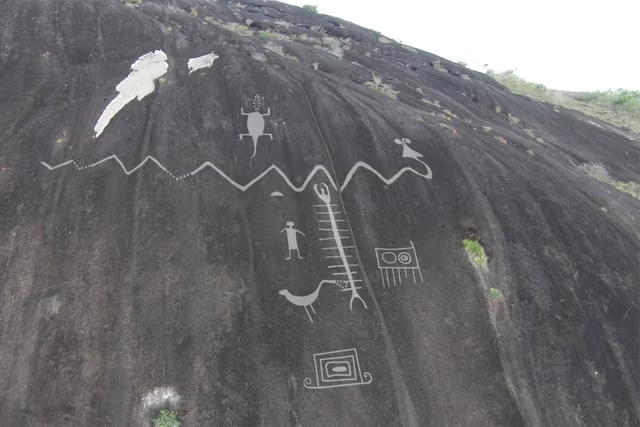A 4,000-year-old timber circle on a Norfolk beach dubbed the “Seahenge” was built after a period of extreme climate degradation at the close of the third millennium BC, a new study has found.
The mysterious ancient structure was first revealed in 1998 by the shifting sands of Holme-next-the-sea beach on the north Norfolk coast.
It consists of an upturned tree stump surrounded by 55 closely fitted oak posts and was originally built on the salt marsh away from the sea.
Researchers estimate it to have been built using timbers dating from 2049 BC.
The strange structure was positioned such that dunes and mud flats protected it from the sea.
A layer of peat which slowly covered the timbers also protected them from decay over thousands of years. There is a second, adjacent ring centred on two oak logs laid flat, which is also dated to the same year.

Previous research hypothesised that the structures may have been erected to mark the death of an individual.
Other theories suggested they were used for special sky burials in which the dead would be placed inside to be pecked and carried away by carrion-eating birds.
Now, a new paper concludes that the Seahenge and the adjacent circle may have been constructed during a bitterly cold climatic period as a ritual to extend the summer and return to warmer weather.
“Dating of Seahenge timbers showed they were felled in spring, and it was considered most probable that these timbers were aligned with sunrise on the summer solstice,” archaeologist David Nance from the University of Aberdeen said.
“We know that the period in which they were constructed 4,000 years ago was a prolonged period of decreased atmospheric temperatures and severe winters and late springs placing these early coastal societies under stress,” he said.
The Seahenge’s alignment matches with sunrise on the summer solstice, suggesting it mimicked the “pen” described in folklore for an unfledged cuckoo to keep singing and extend the summer.
Archaeologists suspect that the strange monument’s structure imitates the winter dwellings of the cuckoo remembered in folklore – a hollow tree or ‘the bowers of the Otherworld’ represented by the upturned oak stump at its center.
“Summer solstice was the date when according to folklore the cuckoo, symbolising fertility, traditionally stopped singing, returned to the Otherworld and the summer went with it,” Dr Nance explained.
“The ritual is remembered in the ‘myth of the pent cuckoo’ where an unfledged cuckoo was placed into a thorn bush and the bird was ‘walled-in’ to extend the summer but it always flew away,” he said.
The other structure, according to Dr Nance, points to legends of ‘sacred kings’ who were sacrificed if misfortune fell on the community.
“Evidence suggests that they were ritually sacrificed every eight years at Samhain (now Halloween) coincident with the eight-year cycle of Venus,” he said.
“Both monuments are best explained as having different functions and associated rituals, but with a common intent: to end the severely cold weather,” Dr Nance said.
Disclaimer: The copyright of this article belongs to the original author. Reposting this article is solely for the purpose of information dissemination and does not constitute any investment advice. If there is any infringement, please contact us immediately. We will make corrections or deletions as necessary. Thank you.



